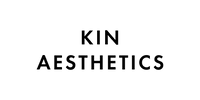The conversation around AI can feel overwhelming. For many solo estheticians and service providers, it brings up understandable fears: Will it make things less personal? Will it take over the parts of my business that feel sacred and human?
But here’s the truth, AI isn’t about replacing connection—it’s about reclaiming your time so you can deepen it.
As estheticians, our income is tied directly to the time we spend in the treatment room. That time is powerful, but also limited. And just like you’ve learned to be intentional about your energy with clients, the same is true for how you show up in your marketing and operations.
AI is here to support that.
AI tools continue to become more intuitive, more creative, and more accessible. From tools that can write emails in your brand voice, to client communication platforms that offer smart scheduling and follow-ups, AI is helping small business owners do more—in less time with less stress.
Some of the newest AI developments in the beauty and wellness world are truly exciting:
-
AI skin analysis tools are becoming more accurate, allowing estheticians to support consultations with more data.
-
Visual creation tools now allow you to generate branded content in minutes—without needing to outsource graphic design.
-
Natural language tools can help you brainstorm, write, edit, and refine content in your voice.
-
And most importantly, AI is now being used to enhance the client experience—automating touchpoints like birthday messages, product refills, and post-treatment check-ins.
Here's what AI isn't: It’s not cold or a replacement for our voice or hands. Instead, think of AI as a free assistant
Here are 10 ways you can use AI in your esthetics business:
Write Content Faster
→ Use AI to draft social captions, emails, and client education, then refine it with your personal tone.
Automate Client Follow-Ups + Reminders
→ Send thoughtful post-treatment check-ins, product refill nudges, or appointment reminders with smart automation.
Generate Personalized Skincare Regimen Summaries
→ After a consultation, use AI to generate a summary you can tweak and send to the client.
Create Captions from Client FAQs
→ Input your most common questions and get 5+ caption ideas instantly.
Design On-Brand Visuals for Promotions
→ Tools like Canva's AI or Adobe Firefly can create beautiful, branded designs with just a few prompts.
Build a Digital Skincare Quiz
→ Use AI logic to help create a personalized quiz that recommends products or services.
Turn One Idea into Multiple Formats
→ Repurpose a content into a carousel post, an email, and a client handout—automatically.
Analyze Patterns in Your Business
→ Use AI reporting tools to track your busiest days, best-selling products, or most loyal clients.
Create Onboarding + Training Materials
→ Whether you’re hiring or collaborating, AI can help you write SOPs, training guides, or service protocols.
Enhance Your Online Booking Experience
→ Smart booking tools are now using AI to suggest ideal services, prep instructions, or upgrades based on client history.
If marketing has ever felt like another full-time job—or if you've struggled to stay consistent while juggling everything else—AI offers a way to keep showing up without losing yourself. AI isn't here to take the soul out of your business it helps you scale with care—without adding more hours to your day.



